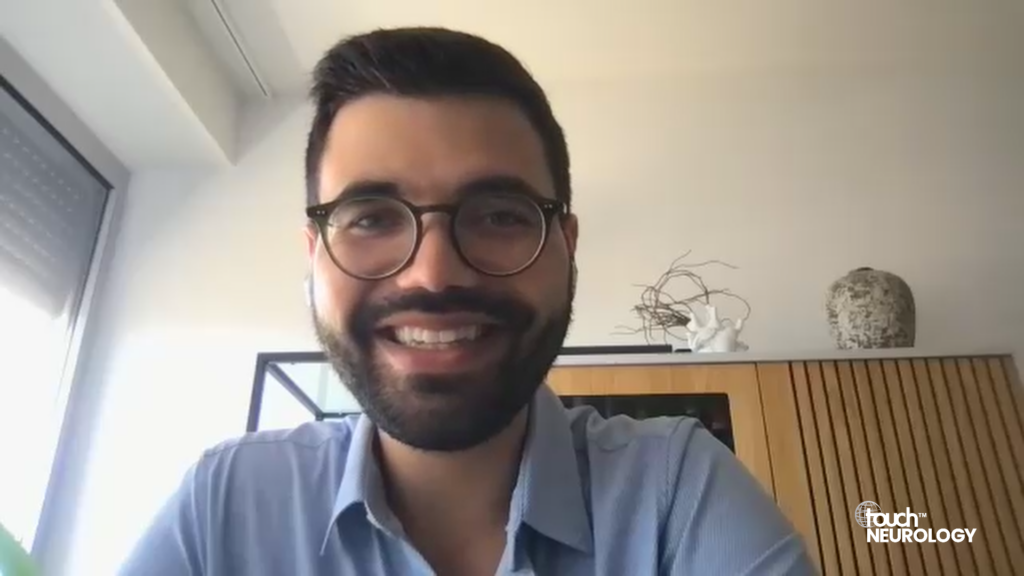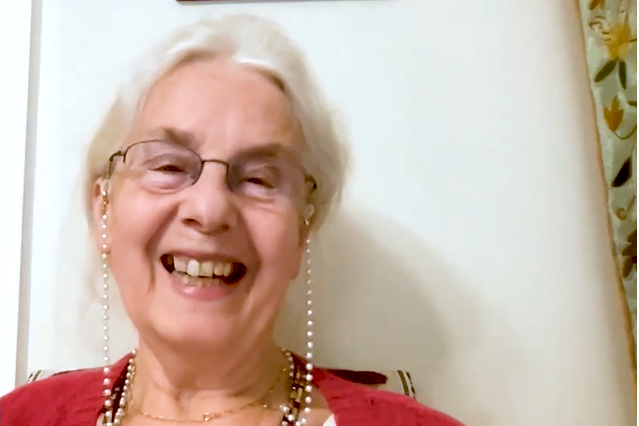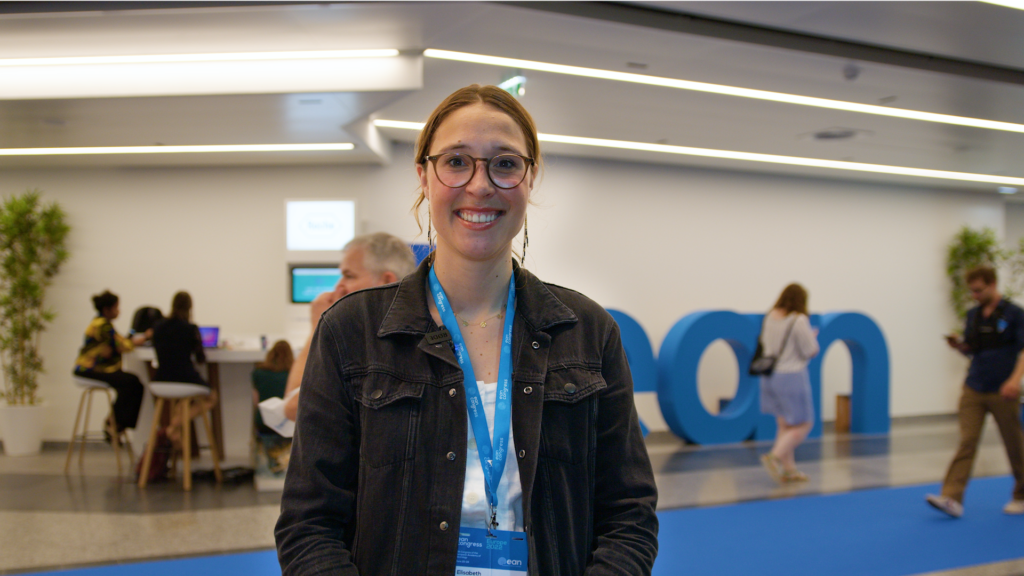touchNEUROLOGY coverage of data presented at EAN 2024:
Late-breaking data from a study investigating auricular transcutaneous vagal nerve stimulation (atVNS) in patients with mild cognitive impairment (MCI) due to Alzheimer’s disease (AD) were presented at the 10th Congress of EAN. In this interview, we speak with the study’s presenter, Dr. Adam Broncel from Neuromedical, Poland, who, along with his team, has been pioneering this innovative approach, building on years of animal model trials to explore its potential in improving cognitive function in patients with AD.
Dr. Broncel explains the rationale behind using vagal nerve stimulation, its impact on hippocampal activity, and how their unique night-time stimulation protocol works. With 51 patients participating—35 in the treatment arm and 16 in the placebo arm—over a 12-week treatment period and an additional 12-week extension for 20 patients, Dr. Broncel shares their exciting results, highlighting significant cognitive improvements in patients with MCI due to AD. He also discusses the safety profile of this promising treatment method, the future potential of atVNS, and the next steps towards clinical practice and market entry.
Questions:
- What is the rationale behind stimulation of the vagal nerve to improve cognition? (0:24)
- Could you summarize the aims, design and key endpoints of the study? (1:35)
- What data was presented at EAN24 and what were the key findings? (3:37)
- What is known about the safety of the equipment used in this study for vagal stimulation? (5:27)
- Are there any barriers to using this method in patients with Alzheimer’s disease? (7:08)
- What are the next steps for developing this approach for use in clinical practice? (7:55)
Associated abstract:
Broncel A et al. Auricular vagal nerve stimulation in patients with mild cognitive impairment due to Alzheimer’s disease (OPR-116). Eur J Neurol. 2024;31(Suppl.1):e16394.
Disclosures: TBC
This content has been developed independently by Touch Medical Media for touchNEUROLOGY. It is not affiliated with the European Adademy of Neurology (EAN). Unapproved products or unapproved uses of approved products may be discussed by the faculty; these situations may reflect the approval status in one or more jurisdictions. No endorsement of unapproved products or unapproved uses is either made or implied by mention of these products or uses by Touch Medical Media or any sponsor. Views expressed are the speaker’s own and do not necessarily reflect the views of Touch Medical Media.
Transcript:
My name is Adam Broncel. I’m a medical doctor and neurologist by education, and I’ve been working in Neuromedical. We are a group of scientists developing a new method for the treatment of Alzheimer’s disease, based on the vagal nerve stimulation.
Q. What is the rationale behind stimulation of the vagal nerve to improve cognition?
One of the reasons we are using a vagal nerve is, of course, this anatomical and physiological connection to the brain. But the second is that we have been doing for many years the trials on the animal model. And, as a group of the scientists, we, for the first time, discovered that the stimulation of the vagal nerve is producing the response from the hippocampus in the form of theta II activity. Theta II hippocampal activity, is, as we know, a biomarker of hippocampal activity, which is happening during the memory consolidation.
So those two reasons are standing behind the rationale of selecting this specific nerve and, of course, some specific protocol of stimulation. For the stimulation, for the treatment of cognitive decline in particular in Alzheimer’s disease.
Q. Could you summarize the aims, design and key endpoints of the study?
In our study, first, initially, we wanted to check, to test, what is the impact of the vagal nerve stimulation on cognition. And, we modified the very well known way of vagal nerve stimulation. By modifying, I mean, we are applying a stimulation during night. And it’s also not an accidental selection. The night is the moment of the memory consolidation process, and we do it for some other reason as well, because it’s, you know, most convenient for the patient to use that stimulation at night when they are sleeping so it is not disturbing them during their day activities. So we designed the study that way that we wanted to see whether the stimulation provided in the specific stimulation protocol is, first, is having any impact on the cognition.
We wanted to test also whether that impact is either slowing down the progress of the disease, eventually stopping it. But finally, what we observe is that in some cases of the patient, we were able to achieve significant improvement in the cognition. And for that purpose, we decided to use the ADAS-Cog scale, ADAS-Cog is an Alzheimer’s disease assessment scale. And we noticed after three months of stimulation, a progress in the cognitive state of most of the patients on the very-high level. In some cases, even reaching seven to eight points in ADAS-Cog.
So the primary outcome is the cognitive improvement observed already after three months of stimulation.
Q. What data was presented at EAN24 and what were the key findings?
We presented the data collected from the clinical trial on a group of 51 patients performed two years ago here in Poland. And, we performed the randomized double-blinded placebo-controlled trial on a group of patients diagnosed with mild cognitive impairment at an earlier time. And, what is the most important, what we learned on that trial is that after three to six months of continuous night-by-night stimulation, we had a group of patients which were continuing as long as six months and the part which was, participating in the trial for three months. And after that period of time, we noticed a statistically significant improvement in the cognition. And, also what is important is that we did a post follow-up study, and we examined the patients again using all the same tools after six months after the completion or termination of stimulation. And, what we observed was that at the end of the initial three to six months of active treatment, there was a significant improvement in memory. And after the termination of the stimulation, in six months’ time, we observed that the patients were coming back to baseline, to the very beginning of their mental status, to the very beginning of the trial.
Q. What is known about the safety of the equipment used in this study for vagal stimulation?
The safety profile should consider, I guess, not only the electrodes, but also the stimulation protocol by itself. So I will start maybe from the protocol. As I said at the beginning, our stimulation is performed at night. So we are using a current, the electrical current just a regular current for the vagal nerve stimulation, but with such a limitation that it is under the sensitivity threshold of the patient. It simply does not disturb them during the sleep. And, as it is well known already, for decades, non-invasive VNS is quite safe and a well-tolerated treatment method by most of the patients. And this is also our observation, fortunately we did not notice any serious adverse events, at all. And, this is the same regarding the stimulation protocol of parameters of the current used in the trial as well as the electrodes. And the electrodes, what is also important in our specific application, is that they were used at night. And there was a special design of not only the electrodes, but the special, we call it, headband. So this is some protective sort of mask used on the patient’s head. And, our findings after the trials is that the method is very well-tolerated and quite safe for a patient.
Q. Are there any barriers to using this method in patients with Alzheimer’s disease?
Yes. There are some barriers, based on the primary findings of Alzheimer’s disease. We believe that the most suitable patients for our treatment are patients in the early phase of Alzheimer’s disease, if not even on MCI. We are not actually intending to use this stimulation in the group of patients with very advanced disease due to the very advanced neurodegenerative process in the brain.
So those are the only barriers which we have identified so far in the treatment, in the usage of that treatment.
Q. What are the next steps for developing this approach for use in clinical practice?
That’s a good question. We are actually quite advanced in the preparation of entering the market.
We are expecting to receive the medical CE within the next few months. And when this happens we will be ready for entering the market, we would like to do it here in Europe. And besides the commercial step, of course, we are planning to launch a multi-centre clinical trials in a few places. And we have also some plans, related to the US market, and we have already started some FDA procedure, planning to start some FDA procedure, in the next few months. Besides the data which I presented in Helsinki, we have also already performed a second clinical trial together with the Israeli Alzheimer’s Centre, which by the name was located in Israel. And the trial performed in the second centre also confirmed the same effectiveness of the method.
So we now have already from two centres confirmation that this method is working. And, we truly hope that it is some change for the patients suffering of Alzheimer’s disease. And we can offer to that group, at least on the initial phase of a disease, some hope and some effective treatment. And, after receiving CE we believe we can give this device to a much, you know, bigger group of patients within the next few months.
Interviewer/Editor: Helen Bowden/Gina Furnival
Cite: Broncel A. Vagal nerve stimulation for mild cognitive impairment due to Alzheimer‘s disease. touchNEUROLOGY. August 10 2024.












